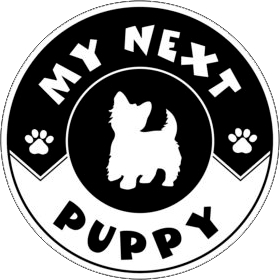-
Pug
The Pug is well described by the phrase “multum in parvo” which means “a lot of dog in a small space.” They are recognized for their even-tempers, playful personalities, and their outgoing, loving dispositions. This square and cobby breed come in fawn, silver fawn, apricot fawn, or black, with a well-defined “mask” on his muzzle. A popular companion dog, the pug also excels in the show ring.
History
The Pug is one of the oldest breeds of dogs and has flourished since before 400 BC. Most researchers agree that the breed comes from Asia, due to its similarities to the Pekingese. China is the earliest known source for Pugs, where they were pets of the Buddhist monasteries in Tibet. The breed next appeared in Japan and Europe, becoming popular when Prince William II became the King of England. He owned Pugs and they became the fashionable breed for generations.
Temperament
The Pug's reason for living is to be near their people and to please them, and their sturdiness makes them a family favorite. They are comfortable in small apartments because they need minimal exercise, but the breed can adapt easily to all situations. The Pug sheds, but its short coat requires little grooming.
- Toy Group; AKC recognized in 1885.
- Weighting between 14 to 18 pounds.
- Companion dog.
Environment
- Apartment is fine.
- Low activity indoors.
- Thrive in moderate climates.
Exercise
- Daily light exercise.
Grooming
- Easy care.
- Heavy seasonal shedding.
-
Basset Hound
Instantly recognizable due to its big, heavy body, short legs, and long ears, the Basset Hound has proven itself to be a multi-purpose dog that excels in conformation, obedience, tracking, field trialing, and pack hunting. The breed is known for its strong hunting instinct and, if given the opportunity, will chase or follow a scent willingly. The Basset can be any hound color, which includes combinations of black, tan, white, red, and other colors.
History
The Basset Hound was originally developed in France as a trailer of small game that hunters could follow on foot. Bassets continued to achieve very notable popularity during the reign of Emperor Napoleon, and in 1880 Queen Alexandra kept Basset Hounds in the royal kennels. Marquis de Lafayette brought Basset Hounds, known for their impeccable sense of smell, to the United States as a gift to President George Washington to use in his hunting expeditions.
Temperament
The Basset's sweet, gentle disposition makes him a great companion and his short coat requires minimal grooming. The Basset is often great with children because they are not overly active. The Basset Hound also actively follows scents while outside so be prepared! They also get along very well with other dogs.
- Hound Group; AKC recognized in 1885.
- Height should not exceed 14 inches tall at the shoulder.
- Hunting dog; trailing dog.
Environment
- Apartment is ok.
- Low activity indoors.
- Average sized yard is fine.
Exercise
- Moderate daily exercise.
Grooming
- Easy care.
- Brush 1X/week.
- Keep ears clean.
'
-
Border Collie
The workaholic of the dog world, the Border Collie is the world's premier sheep herder, prized for its intelligence, extraordinary instinct and working ability. Medium-sized and athletic, the breed controls stock with stalking movement and an intense gaze known as “eye.” The Border Collie coat can be rough or smooth and includes any color in bi-color, tri-color, merle, sable, or solid patterns.
History
In the border country between Scotland and England, Border Collies (first classified as the “Scotch Sheep Dog”) were invaluable to shepherds by allowing them to maintain large flocks of sheep. The breed as we know it today has been around for more than 100 years. In the second half of the 19th century, Queen Victoria spotted a Border Collie and became an active enthusiast. At this point, the divergence between our modern Collie and the Border Collie began.
Temperament
This high-drive breed is extremely energetic and requires exercise beyond just a walk around the block or a romp in the yard. They thrive when they have a job to do and space to run. Due to their tendency to herd objects and people, they do best with mature, well-behaved children. They love their families, but maybe somewhat reserved with strangers. They are seasonal shedders and require regular brushing.
- Herding Group; AKC recognized in 1995.
- Ranging in size from 18 to 22 inches tall at the shoulder.
- Sheepherder.
Environment
- Apartment? Not so much.
- Highly active indoors.
- Love acreage.
Exercise
- Lots of exercise.
- Love to learn and train.
- Must stay active.
Grooming
- Regular brushing and combing.
- Average shedding.
- Infrequent bathing.
-
Boxer
The well-conditioned middleweight athlete of dogdom, the Boxer is a powerful dog with an intelligent and alert expression. While they are instinctive guardians, the Boxer loves to be with his people. This personality has allowed them to succeed as couriers during wartime and as seeing-eye dogs for the blind. Appearing in both fawn and brindle colors, the Boxer currently ranks as one of the most popular dogs in the United States according to AKC Registration Statistics.
History
Developed in Germany in the 19th century, Boxers were originally used for dog fighting and to run down and hold large game such as wild boar and bison until the hunter could arrive. The breed is known for standing up on its hind legs and batting at its opponent, appearing to box with its front paws. Imported to America after World War I, they began to grow in popularity in the late 1930s.
Temperament
One of the breed's most notable characteristics is its desire for human affection, especially from children. The Boxer requires little grooming, but needs daily exercise. The Boxer gets along great with children, often protecting them from outside threats. They are also very intelligent, therefore easy to train and housebreak.
- Working Group; AKC recognized in 1904.
- Ranging in size from 21 inches to 25 inches tall at the shoulder.
- Large game hunter, guard and companion dog.
Environment
- Apartment is ok.
- Active indoors.
- Thrive in moderate climates.
Exercise
- Lots of activity needed.
- Moderate to extended daily exercise.
Grooming
- Easy care.
- Occasional brushing.
- Average shedding.
-
Labrador Retriever
The gentle, intelligent and family-friendly Labrador Retriever from Canada continues to be the most popular breed in the United States, according to AKC registration statistics. This versatile hunting breed comes in three colors yellow, black and chocolate and because of his aptitude to please his master, they excel as guide dogs for the blind, as part of search-and-rescue teams or in narcotics detection with law enforcement.
History
Labrador Retrievers, originally from Newfoundland, were initially used in work alongside fishermen, helping to pull in nets and catch fish that escaped from fishing lines. After being crossed with Setters, Spaniels and other Retrievers, the Labrador Retriever honed its skills as a true retriever. They have a stable temperament suitable for a variety of activities beyond hunting.
Temperament
An ideal sporting and family dog, the Labrador Retriever thrives as part of an active family or as a trusted hunting companion. A double-coated breed which sheds seasonally, regular grooming keeps his coat at its water-resistant best. Because of his even temperament and trainability, millions of Americans own a Labrador Retriever as a pet. The Labrador Retriever is fantastic with children and other dogs. They are extremely intelligent and therefore housebreak very easily. The lab trains best with positive reinforcement. You should train with treats for the most effectiveness. Petland carries many different types of soft treats for both puppies and adults. You need to make sure everyone in your household knows how to follow up with the correct training techniques.
- Sporting Group; AKC recognized in 1917.
- Average size: from 55 to 75 pounds
- Outgoing and devoted companions; Water dog
Environment
- Apartment is ok.
- Low activity indoors.
- Loves a large yard.
Exercise
- Daily moderate exercise.
- Loves to play and train.
Grooming
- Easy care.
- Regular brushing.
- Average shedding.
-
Chow Chow
A powerful, sturdy dog of Arctic type, medium in size and muscular with heavy bone, the Chow Chow is an ancient breed of northern Chinese origin. While the breed was originally a working dog, he primarily serves as a companion today and is seen in show rings across the country. This lion-like, regal breed comes in five colors – red, black, blue, cinnamon and cream – and is known for its blue/black tongue and stilted gait. Their coats can also be either rough or smooth.
History
The true origin of the Chow is unknown, but the breed as it is known today is easily recognizable in pottery and sculptures of the Chinese Han Dynasty (206 B.C. to 22 A.D.). An all-purpose dog used for hunting, herding, pulling and protection of the home, some scholars claim the Chow was the original ancestor of the Samoyed, Norwegian Elkhound, Pomeranian and Keeshond.
Temperment
Affectionate and devoted to family, the Chow is reserved and discerning with strangers. Their cat-like personalities make them independent, stubborn and less eager to please than other breeds. They require early socialization and training, and some kind of exercise daily. Regular grooming and bathing is a must to maintain their double coats.
- Non-Sporting Group; AKC recognized in 1903.
- Ranging in size from 17 to 20 inches tall at the shoulder.
- Hunter; guard dog.
Environment
- Apartment is ok.
- Low activity indoors.
- Be careful in hot climates.
Exercise
- Daily short walk is fine.
Grooming
- Regular thorough brushing.
- Heavy shedding.
-
Dalmatian
The only spotted breed, the Dalmatian is alert and active, possessing great endurance, speed and intelligence. Their working and sporting heritage makes them suitable as both a family pet or performance animal, and they are often found in the show, obedience and agility rings, or galloping alongside a horse as a coach dog in “road trials.” Their short coat is white with black or liver (brown) spots.
History
Spotted dogs have appeared throughout history in Europe, Asia, and Africa, credited with a dozen nationalities and as many native names. The dog we know today as the Dalmatian has been a dog of war, a draft dog, shepherd, ratter, fire-apparatus follower, firehouse mascot, bird dog, trail hound and retriever. Most importantly, he is the original and only coaching dog. His affinity for horses remains a basic instinct to this day and the breed is a natural follower and guardian of the horse-drawn vehicle.
Temperament
The fun-loving, people-oriented Dalmatian thrives in a family environment. The breed's short coat sheds almost year-round, but regular brushing helps minimize the shedding. The Dalmatian is great with kids but needs a little work with other dogs. It's best to introduce the Dalmatian as a puppy to new environments.
- Non-Sporting Group; AKC recognized in 1888.
- Ranging in size from 19 to 23 inches tall at the shoulder.
- Coach dog; guardian.
Environment
- Apartment? Not so much.
- High activity indoors.
Exercise
- Moderate to vigorous daily exercise.
Grooming
- Frequent brushing.
- Infrequent bathing.
- Seasonal and year round shedding.

 Available Puppies
Available Puppies What People Are Saying
What People Are Saying